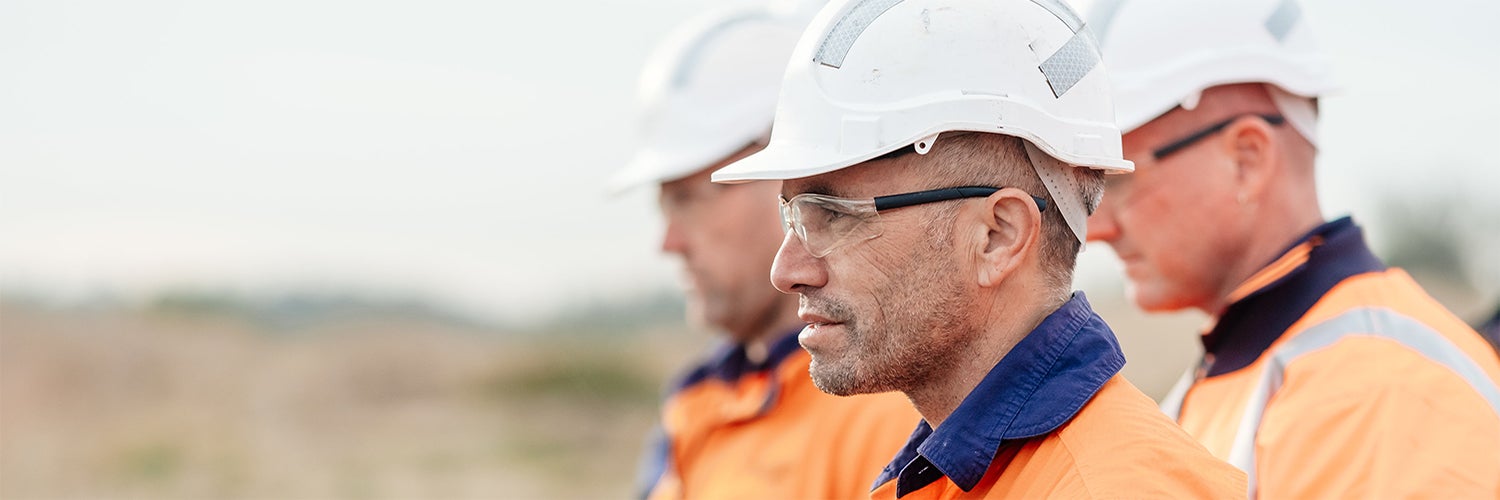Page
Mindset the key to managing risk
As seen on their website – www.imarcmelbourne.com
A leading mining executive has urged other industry leaders to be more in tune with staff behaviours in order to effectively manage risk in the workplace. White Rock Minerals Managing Director and CEO Matt Gill said if company leaders were to adequately understand and manage risk, a systematic shift in mindset was required to dissolve the traditionally procedural mindset of mining engineers. “Mining is a very technical world where engineers are focussed on problem solving, seek clarity, structure and everyone is looking for a binary, black and white and often an absolute, outcome,” Mr Gill said. “But we are all flawed as human beings and what we don’t get enough exposure to is what we need to be aware of when we are managing people. “When you are managing risk you need to know a lot about yourself and other people—more than perhaps you think you do.” With more than 30 years of mining experience, Mr Gill said it became apparent to him that many managers in the sector could better understand the behaviours of people, what they did and why, in the face of a confusing and culturally diverse working environment, if they considered more about the mindset and behaviours of people and to try and understand what goes on in people’s heads in different scenarios. He said the traditionally male-dominated workforce that operated in a hierarchical structure had created an environment that had neglected the importance of understanding people. “Look at a group of people doing a risk register or a fatal risk protocol for example, there can be a lot of different personality types in one of those discussions and each one will expect to land on a common set of risk reduction actions and an acceptable 5-by- 5 matrix outcome,” he said. “Therein lies the challenge, while some people may have a risk tolerance high enough to be happy to jump out of a plane, others may not. “It’s important we don’t let the extroverted ‘plane jumpers’ dominate the dialogue as some of the most knowledgeable people might also be the quietest. “Whilst seductive, it is also a risk in itself to think the risk is under control as a result of the exercise. Vigilance is always required as people are always involved. “This is where understanding your employees’ personality types is imperative so you can get the most out of your team.” Mr Gill said senior managers were more aware of the psychology of risk and its importance now compared with a few years ago. “My experience tells me that senior managers need to lead by example as it just feels more genuine and trustworthy, which is critical to the success of managing risk,” he said. “The key to leadership in risk is not only having vision around understanding human judgement and decision making, but being prepared to accept failure as a learning opportunity, the need to subsequently build resilience in the team to be able to bounce back from the inevitable, but also to understand the nature of motivation and why people do what they do.” Mr Gill will challenge mining experts to think about how the psychology of risk can improve mining operations at the International Mining and Resources Conference (IMARC) in Melbourne later this year. IMARC 2016 will unite the global mining industry in Australia, bringing together over 2,500 delegates from all aspects of the mining value chain worldwide. Recognising the importance of health, safety and environment at mine sites, for the first time, this year’s conference will feature a full day Health & Safety programme. From culture, to prevention, to risk management, to safety in a digital age. IMARC 2016 will be held at the Melbourne Convention and Exhibition Centre from 7–10 November. For further information, contact: Libby Tague/Richard Coombs, BBS Communications Group, +61 7 3221 6711

